Jeep Avenger Electric
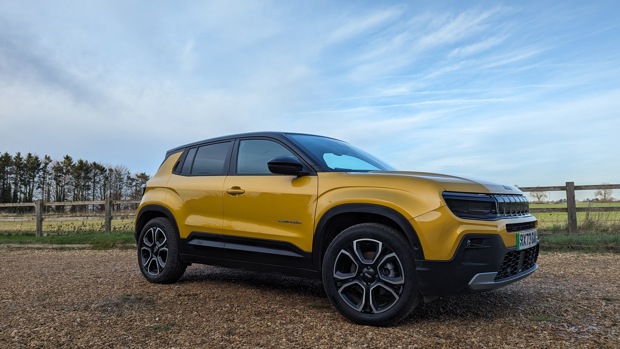
Specifications: Jeep Avenger Electric Summit
- Run by: Dan Harrison since Feb 2024
- Price when new: £39.600 (£42,125 including options)
- Power: 115 kW
- Torque: 260Nm
- Battery: 54 kWh (51 kWh usable)
- Claimed range: 249 miles
- CO2 emissions: 0g/km
Report 1: All-American heritage meets European high tech
We've been big fans of the Jeep Avenger since the car's launch more than a year ago, so when the opportunity came to run one in EV form, it was a no-brainer.
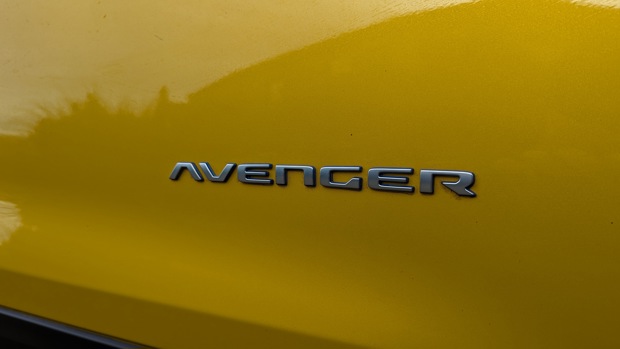
Date: 14 February 2024 | Current mileage: 2845 | Claimed range: 249 miles | Actual range: 190 miles
Here is our Jeep Avenger in all its bright yellow glory, the first Jeep to have been designed, developed and built outside of the States.
That's right, despite the name, nods to Jeep's past and rugged looks, the Avenger is a European creation with the engineering and engineering work taking place in Italy and the manufacturing in Poland.
It has more in common with the DS 3 Crossback, the new Fiat 600e and the Vauxhall Mokka Electric (Jeep's parent company Stellantis owns these other brands too) than it does with other Jeeps you may see on a dealer's forecourt. That said, there's more than a sprinkling of Jeep-if-ication with the classic chunky looks, short overhangs and famed off-road ability.
While it may look pleasingly familiar, the tech underneath is anything but - well for a Jeep at least. Power comes from a 154bhp electric motor paired with a 54kWh battery that's claimed to have a range of up to 249 miles.
With short nursery runs and weekly longer 250+ mile round trips to London planned, that range claim is going to be well tested. Plus, I'm running this car in winter and that's bound to have an impact on performance.
Spring can't come soon enough for me to run an EV. With a 12kWh solar set up and a Zappi smart charger that diverts excess solar energy to the car, almost all of the electricity to power our EVs is free for about seven to eight months a year.
That under the bonnet tech is topped off with some tasty spec inside, with this Summit-spec model getting a 10.5-inch infotainment system, with Apple Carplay/Android Auto, adaptive cruise control, keyless start and entry and heated front seats - pretty good for a car of this size.
It looks good too, with a smart mix of materials and an attractive, modern look. First impressions are good as unlike many other EVs it looks like a car, rather than an electric car - and that’s because you can buy the Jeep Avenger with more petrol engines too.
Does the fact that it wasn’t designed exclusively to be an electric car from the outset mean it's compromised? Maybe - but we’ll see how that plays out in coming months. Having lived with quite a few EVs in recent years, I should be well placed to pick up on the tell-tell signs.
As you may have guessed, that level of spec, topped up with a few optional extras (Sun and Volcano roof bi-colour paint at £1100, Infotainment Pack which includes traffic sign recognition at £500, Black leather with grey stitching for £500 and a puncture repair kit at £25) does not come cheap.
Without options you’re looking at just shy of £40k, at £39,600, with the options taking it to £41,125. That isn’t cheap, but compares well to key rivals and this is the range-topping model, opt for an entry-level Longitude-spec and drop the options and it comes in a shade over £35K. Plus, as I’m looking to cut fuel costs to the bone with ‘free’ solar charging in coming months, could the maths start to stack up?
Report 2: Does a small car work for a small family?
The Jeep Avenger is designed as a small family SUV but we discover how easy it is to fit a car seat and get a buggy in the boot.
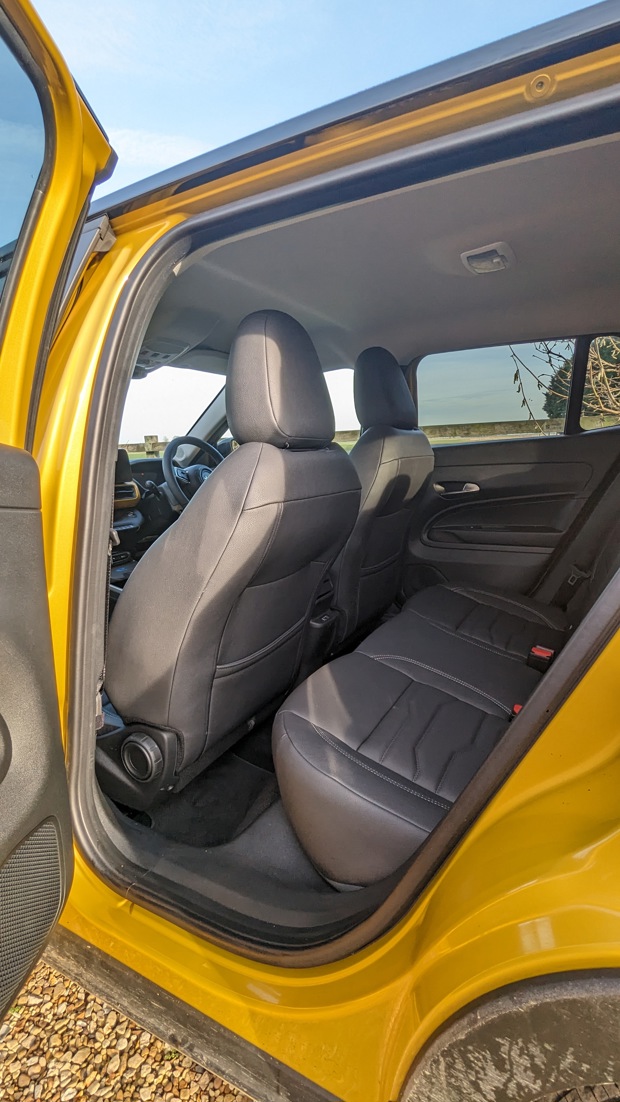
Date: 18 February 2024 | Current mileage: 3125 | Claimed range: 249 miles | Actual range: 190 miles
This is the smallest car that I’ve run in some time. Although Jeeps may have a traditional image of being big, roomy and capable of taking everything that life throws at them, this one tries to achieve something similar in a much smaller footprint.
This is very much a city car that with tall proportions and a big-Jeep features like the seven-bar grille tries to hoodwink you into thinking it’s actually a much bigger car.
In most ways it does a decent job of that - headroom is decent, it’s roomy up front, light and you can’t complain about visibility either. It’s a bit tighter in the back and not much fun for adults on longer trips, but a couple of kids will get on just fine.
And we have one of those. A ten month old, which has meant that the interior practicality of the Avenger has been stretched at times - what with all the paraphernalia that goes with them. And although it has been a squeeze at times, there’s a lot going for it and if you’re a small family, owning and living with a Jeep Avenger certainly isn’t out of the question.
Firstly and most importantly - for me at least - the Isofix child seat anchor points are really easy to access. On some cars these can be rather buried within the seat squab, but Jeep has done a great job here to make them family-friendly and easily accessible.
At the back of the seat, there’s a couple of zips and unzipping these reveals the anchor points with little in the way of probing around. That’s made fitting the Cybex Cloud Z2 i-Size with a base that we’ve opted for really easy. Just as well, as we're regularly moving it between cars, so the quicker and easier that happens the better.
The seat itself is an upgraded version of the award-winning Cybex Cloud Z i-Size, with similar - but enhanced - features. Most significant of those improvements is the recline function. While the original Cloud Z allowed adjustment to a flatter angle only when connected to a pushchair chassis, the new model offers the flexibility to semi-recline within the car and lie completely flat outside the car. Paired with the swivelling base, it makes a breeze of getting the child in-and-out of the car.
These days, you can’t just have a car seat and a push chair, it has to be a “travel system” and this seat is no different, being paired with a Mamas & Papas Ocarro. This is a fairly significantly sized pram and very sturdy.
That’s made it a bit of a squeeze for the Jeep Avenger’s boot and requires a bit of elbow grease to get it in (as well as removing the wheels). But, it fits in the boot, even though it’s a substantial piece of kit. The downside to that is that it fills the boot entirely and save for a couple of coats of a small bag, there is no other room.
That means any other bits and pieces that you need for the baby or general luggage has to go on the back seat or by the feet of the front passenger. This is the point at which things can get a bit tight. That said, you have to remember that this is a small car and that means there will be compromises.
You can see why the market for this type of small car/big car has really taken off in recent years.
Report 3: Systems issues leave us stranded - what happened?
Our Jeep Avenger suffers a serious electrical issue that leaves Dan and his family stranded miles from home.
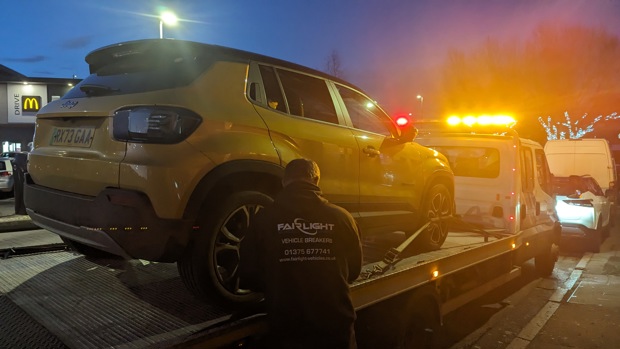
Date: 4 March 2024 | Current mileage: 3972 | Claimed range: 249 miles | Actual range: 190 miles
Of course it happened at the most inconvenient time possible - it always does. With 5% battery and 150 miles away from home, our Jeep Avenger suffered a serious systems melt-down, baffled an RAC engineer and required being put on the back of a flatbed to a nearby dealer.
It had all started so promisingly with a dash from our home in Lincolnshire to Kent to see my sister’s week-old baby. On the way down, the Jeep Avenger hadn’t missed a beat and dispatched the 150-odd motorway miles comfortably and pretty much unremarkably. With a full battery and little traffic, we had an entirely effortless trip. We also had a 45 minute charge and ran some errands.
So, it was out of the blue what was to come next. Parked up at a rapid (120 kWh) charger in Maidstone and the Jeep Avenger was ready for it - down to just 5% battery. I was expecting to be parked up for an hour’s top-up and then back on my way.
I reversed into the bay, plugged in, authorised payment and then … nothing. The charging point said there was a charging error and refused to add any charge. So I tried again. Nothing. And again. Nothing.
At this point, I thought there must be an issue with the charger itself, so went to move the Jeep Avenger into the second bay, as there were two rapid chargers at this location. But that’s when the problems really started.
As I got into the driver’s seat it was clear that all was not right and there had been something of a serious systems failure. The car wouldn’t switch off to start with, was throwing up a series of errors and - crucially - would not go into drive.
After a few minutes of trying everything to resolve the issue - such as locking the car etc - nothing worked and the car remained on and refused to go into drive. I decided, grudgingly, at this point it was time to call the RAC out (the RAC fulfils Jeep Assist - the company’s breakdown assistance).
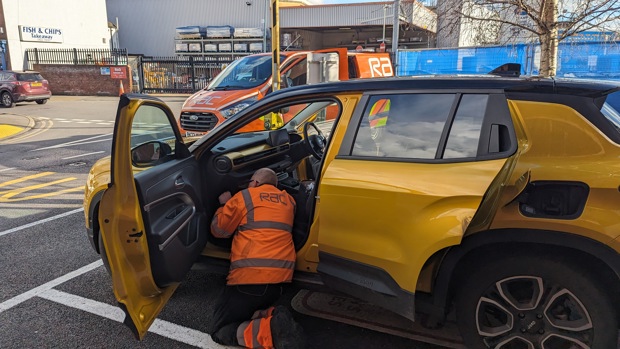
We were in luck too. With a baby in the car, the RAC made us a priority and there was a patrol just 15 minutes away. He arrived promptly and plugged diagnostic equipment into the car to see what the issues were.
Within 10 minutes, he’d reset everything and it was promising that we’d soon be on our way. "I’ll just plug it in and make sure it charges okay", I said. And then it all started again - refusing charge, error warnings and a system meltdown. It was at that point that it became clear the Jeep Avenger wouldn’t be going anywhere under its own steam. The mobile RAC technician said there was nothing more he could do and it would need some specialist work.
Pretty soon, a flatbed truck was on its way (though ended up coming across from Essex, taking a few hours) and there was a plan to take us and the car all the way back home. Thankfully, the RAC adapted this after some too-ing and fro-ing, organised a hire car (a petrol-powered Nissan Qashqai) and arranged for the breakdown truck to take the car to a local dealer. From start to finish, this was about four and a half hours.
Breakdown companies often come in for a bit of stick and you only ever hear about the horror stories when people are left at the side of the road for hours on end. But the RAC couldn’t be faulted. Not only did they keep us up to date with what was happening by email, text and phone calls but took a complex situation and made sure we were able to get home - which was 150 miles away - quickly. Made all the harder by the fact this was on a Sunday afternoon.
So what was the issue? After arriving at a Kent Jeep dealer, Jeep picked the car up and took it to their HQ. This car was still running “pre-production” software and an upgrade was needed. It was away for 10 days while it was fixed and tested and has been almost fuss-free since it returned.
I say almost, as there was an incident where it stopped a charge half way through on a public charger a few weeks later, but I was able to carry on my journey. And since then it has been problem-free.
What does this tell us about the reliability of EVs? Something that we hear so much about in the mainstream press. Not a lot really. This one had a fault, that has - touch wood - been fixed. Cars go wrong from time-to-time. EVs do. Diesels do. Petrols do.
For me (and as readers tell us), the important thing is how a company reacts when something isn’t right. On this occasion, while it was inconvenient and rather annoying, the processes in place to keep us mobile worked and the issues were investigated in depth and fixed for the long term - rather than just being a sticking plaster.
